The Avro Arrow: The Plane That Never Was
Copyright © 2021, Toronto Historical Association
The story of the Avro Arrow begins as the Korean War ends. The Canadian Air Force had been flying the F-86 Sabre Jet during the conflict – a variant of the US model – and the CF-100 fighter aircraft. The Sabres would live on for a few years as aerobatic aircraft, painted gold, precursors to the Snowbirds, at air shows around the world.
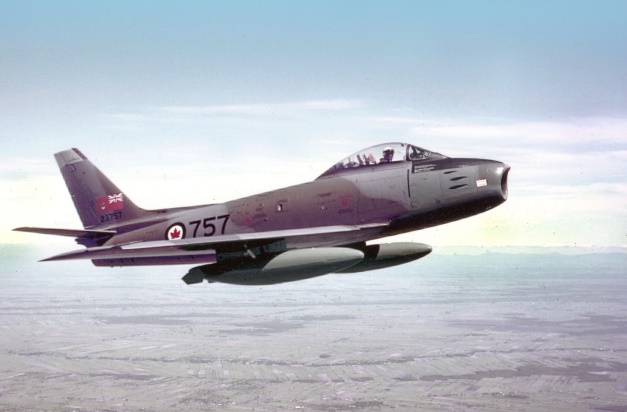
F86 Canadian Air Force
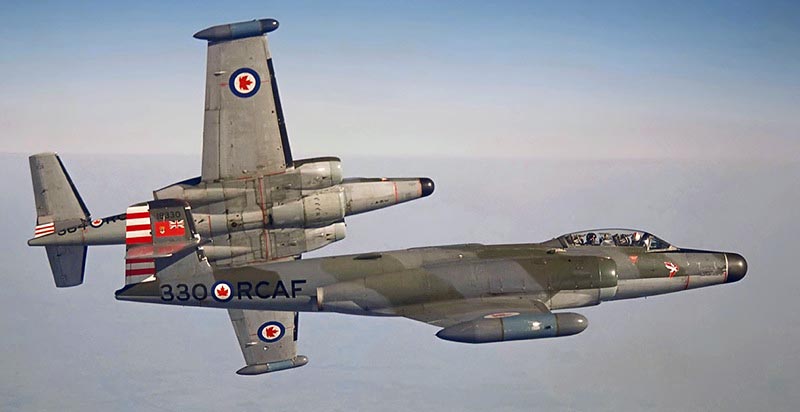
CF100 Canadian Air Force
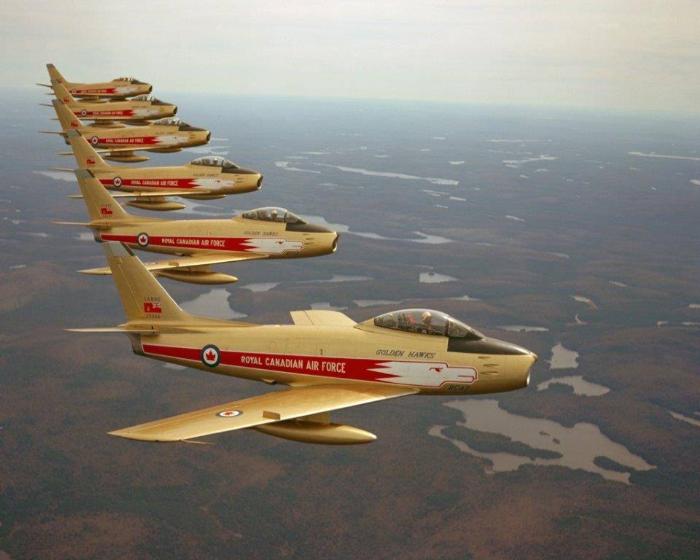
F86 Canadian Aerobatic Team
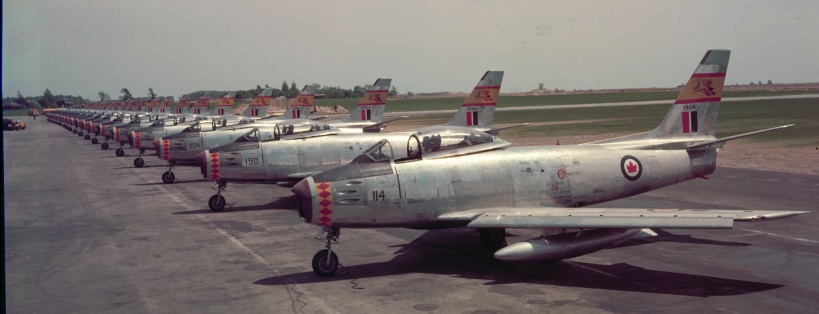
CF86 line up
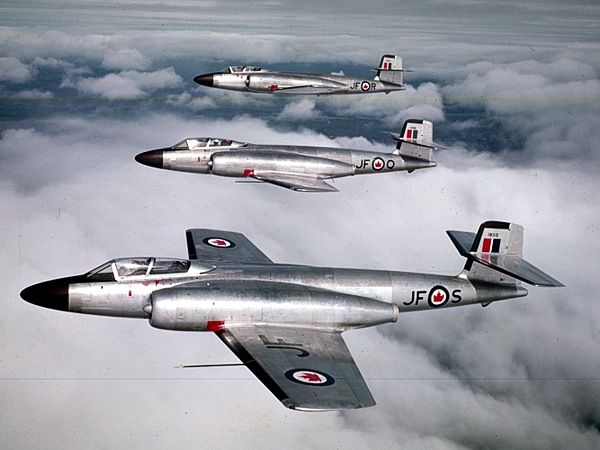
CF100 in flight
But the government was looking for a replacement to modernize the force to combat the threat of Russia as the Cold War heightened tensions, particularly in the Arctic. This new plane had to meet demanding criteria. It was to be a twin-engined, two-seater, all weather interceptor with a radius of action of over 1000 kms and a maximum speed of more than Mach 1.5. It was to be equipped with a sophisticated fire control system and have an all-missile armament. Nothing like that existed at the time. The winning bid was the design submitted by the A.V. Roe Corporation, Avro of Malton. Work soon began on the CF-105 Arrow.
The Liberal government, under Louis St. Laurent ordered 600 planes.
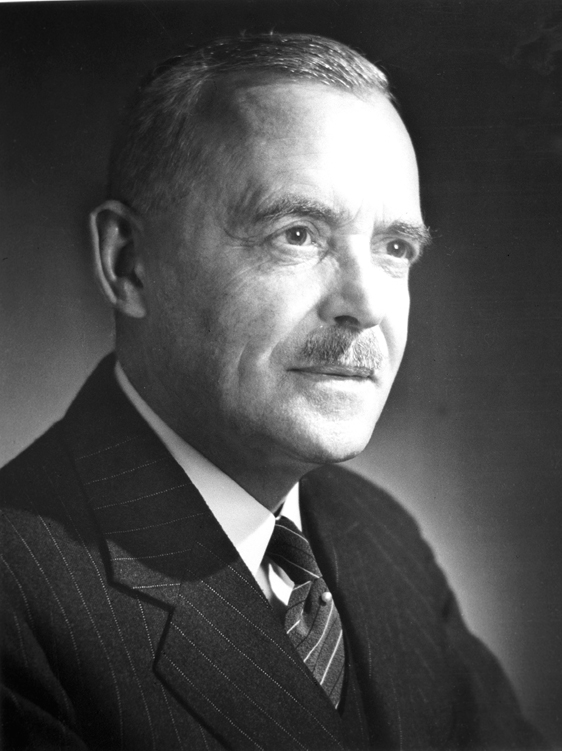
PM Louis St Laurent
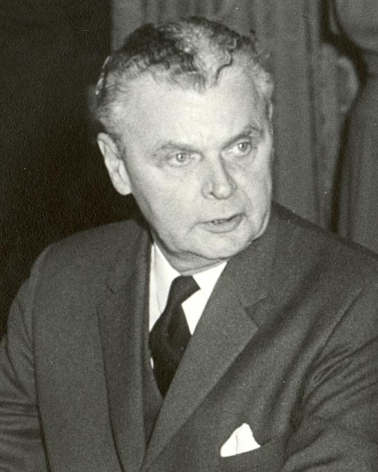
PM John Diefenbaker
PM Louis St. Laurent began the Arrow project and PM John Diefenbaker ended it.
This would put Canada in the forefront of military air power and be a highly effective deterrent to Soviet advances as a threat to North America. As progress continued on the planes’ development, the country faced national elections and, in 1957, the Conservatives, led by John Diefenbaker came to power. They were much less supportive of the project and cut the order to 100 planes. With production cuts, inflation and the usual development problems and delays, inevitable with building a new prototype aircraft of such sophistication, the costs soared. The $2 million per plane project ballooned to $12.5 million per aircraft. Each and every delay and problem was reported in detail in the press and debate ensued.
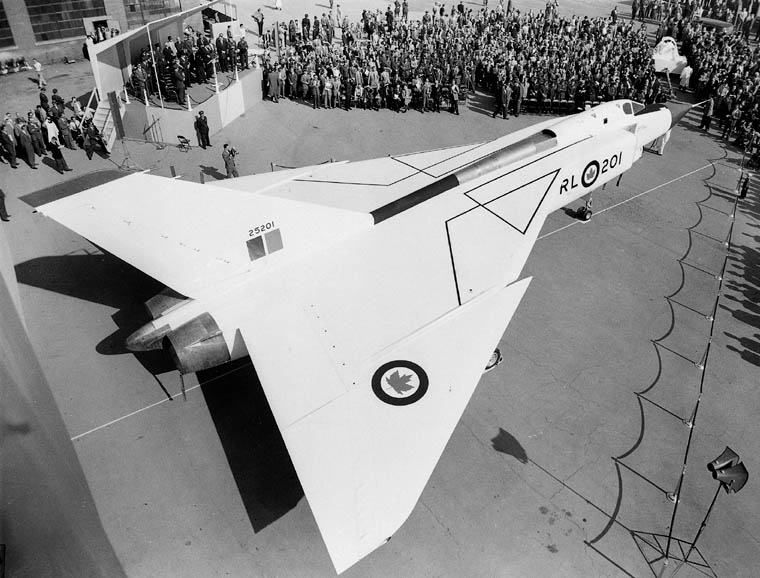
Avro Arrow
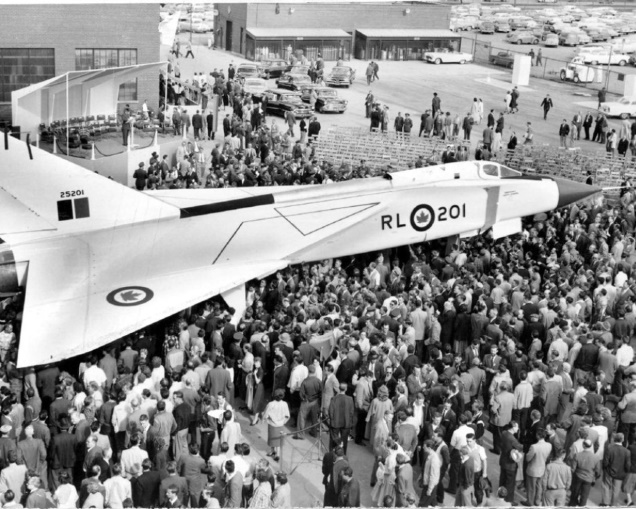
Avro Arrow
The Arrow appeared in public on October 4, 1957 and was hailed by the Minister of Defence, Major-General George R. Pearkes, as the start of a new age in Canadian aviation history. That same day, the Soviets launched Sputnik 1. Eighteen months later on February 20, 1959, the Prime Minister announced the cancellation of the project.
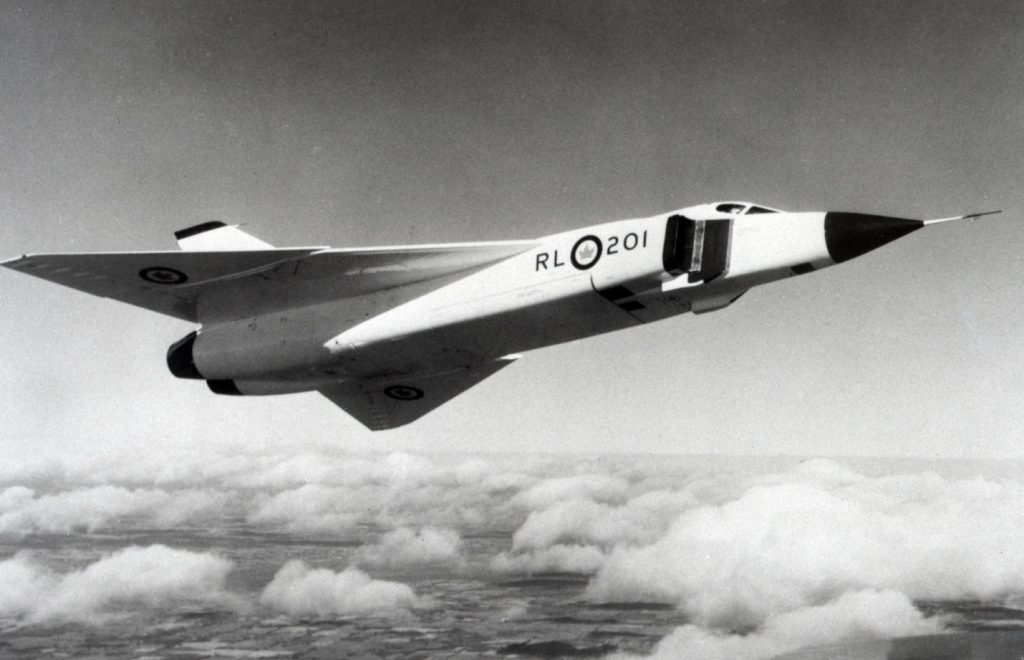
Avro Arrow
While this was a blow to Canada’s hopes and was fiercely debated, what was worse was the demand of the government that all 5 prototypes, all related documentation and equipment be destroyed. There was to be no record that the aircraft had ever existed.
Major-General George Pearkes was for the plane and then against it.
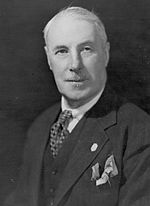
Major-General George Pearkes
The official reason given was that the missile age had dawned and manned fighter jets were now obsolete. Canada opted to purchase the Bomarc missile system from the US instead [Canada could not afford both the jet and the missiles]. Regrettably, the Bomarc was an untried system itself and ultimately was proved worthless.
The official reason given was that the missile age had dawned and manned fighter jets were now obsolete. Canada opted to purchase the Bomarc missile system from the US instead [Canada could not afford both the jet and the missiles]. Regrettably, the Bomarc was an untried system itself and ultimately was proved worthless.
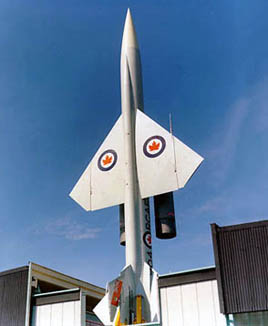
Bomarc
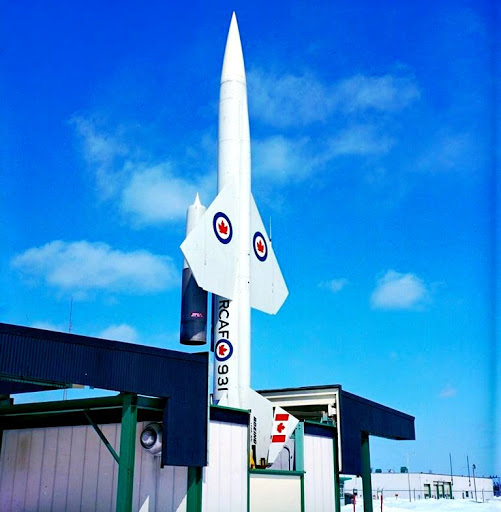
The Bomarc – the Arrow’s “replacement”
Conspiracies continued for many years claiming that Diefenbaker ordered the cancellation and destruction of all the related materials at the behest of the US military, worried that the Arrow would challenge the supremacy of the U2 spy planes. Documents uncovered prior to 2002, dating from 1958 show that General Charles Foulkes, Chair of the Chiefs of Staff, Department of Defense, pressured Diefenbaker to cancel, claiming the massive cost overruns and the lack of control the military had over the plane and the project as necessitating the shutdown. In fact, the Americans offered to help save the program with Secretary of the Air Force, James Douglas, offering to purchase a squadron of Arrows as a front line Arctic defence against Soviet aggression. This was turned down by the Conservatives. The actual destruction was, supposedly, ordered by Crawford Gordon, head of A.V. Roe.
Unhappily, within months of the Arrow’s demise, Canada realized that high performance fighter jets were necessary after all to counter Soviet bombers in the North. In 1961, Canada took delivery of 66 second-hand F-101 Voodoo fighters from the US to fill the gap.
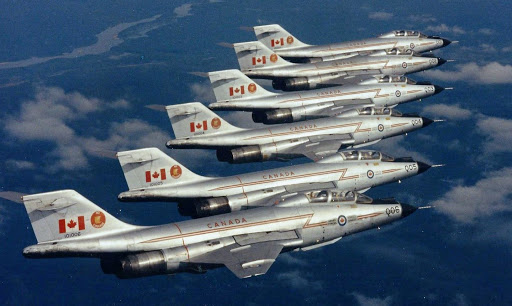
CF Voodoo fighters
With the loss of the Arrow project went the loss of some 14,000 jobs and, possibly 50,000 people were left without work when suppliers and other services were counted. There was a massive brain-drain to the US, many of the personnel landing in the new American space program which soon saw John Glenn orbiting the Earth.
While a great many condemned the Conservatives, there were a few figures who became ‘heroes’. One was test pilot, Jan Zurakowski. A World War II spitfire pilot with the all-Polish Squadron in the Battle of Britain, he immigrated to Canada in 1952 and flew CF-100’s. He then exclusively tested the Arrow reaching Mach 1.1 at a height of 13,000 meters on his 3rd flight.
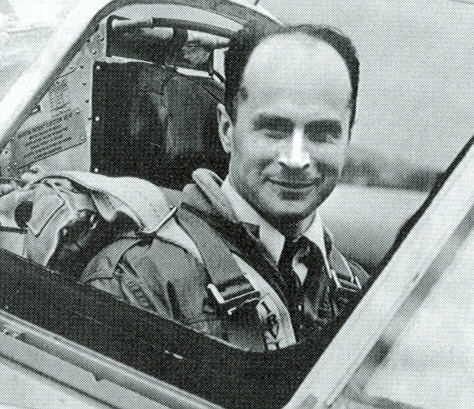
Test Pilot, Jan Zurakowski
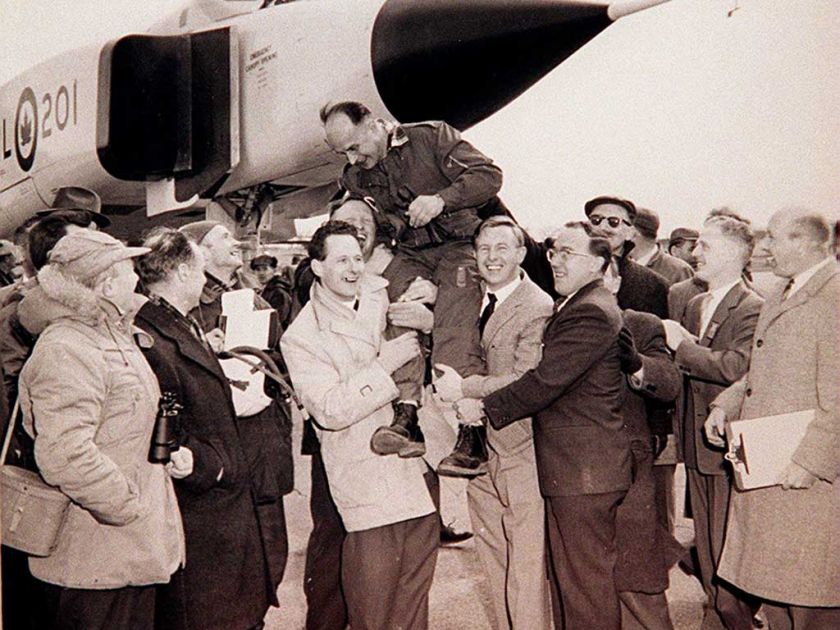
Test Pilot, Jan Zurakowski
Despite the destruction of ‘everything’ Arrow, fans, collectors and aviation historians continue to be fascinated with the story and the plane. Researchers and treasure hunters still actively hunt for any information or scraps and others have bypassed digging for old stuff and have decided to create anew. A full scale mock-up of the Arrow was built and displayed at a Toronto-based air and space museum before the facility was closed. The model ended up under wraps at Toronto/Pearson Airport before being re-discovered and moved to a safer space.
In the early 2000’s A University of Toronto engineer, Peter Zuuring spearheaded a $50 million plan to build a fully functional working replica of the Arrow. It was supposed to launch Feb. 23, 2009. Nothing has been heard of that since.
One of the Orenda Iroquois engines that was to power the Arrow was obtained by the Canadian Warplane Museum in Hamilton and loaned to the propulsion lab at the National Research Council in Ottawa for conservation, though not for operational restoration.
On another front, teams are looking to recover the small scale mock-up test models that were used to test flight characteristics and which had been shot over and into Lake Ontario between 1954 and 1957. These weighed 180 kilos apiece and had a wingspan of 2 metres. One of the 9 test models was hauled from the water in 1999. A second test model was recovered by the Avro Arrow Model Recovery Project months later and four of the nine have now been pulled ashore.
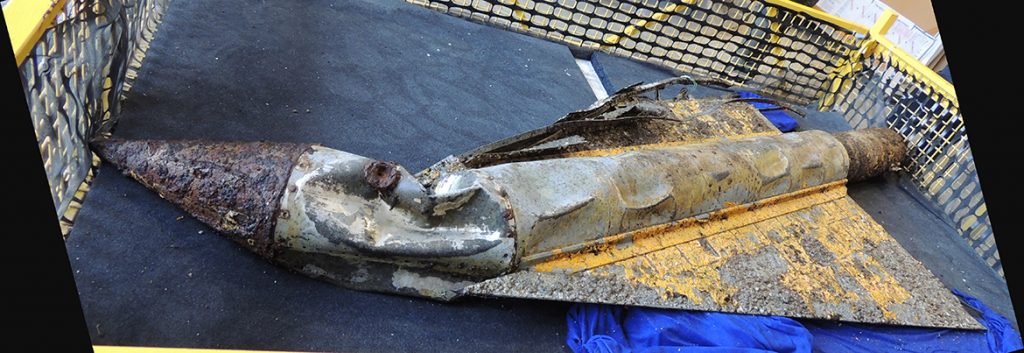
Test Model
For a plane that “never flew”, its story is one that overshadows many tales of front line warplanes and it remains one this country’s great “what ifs”.
– Paul Federico
